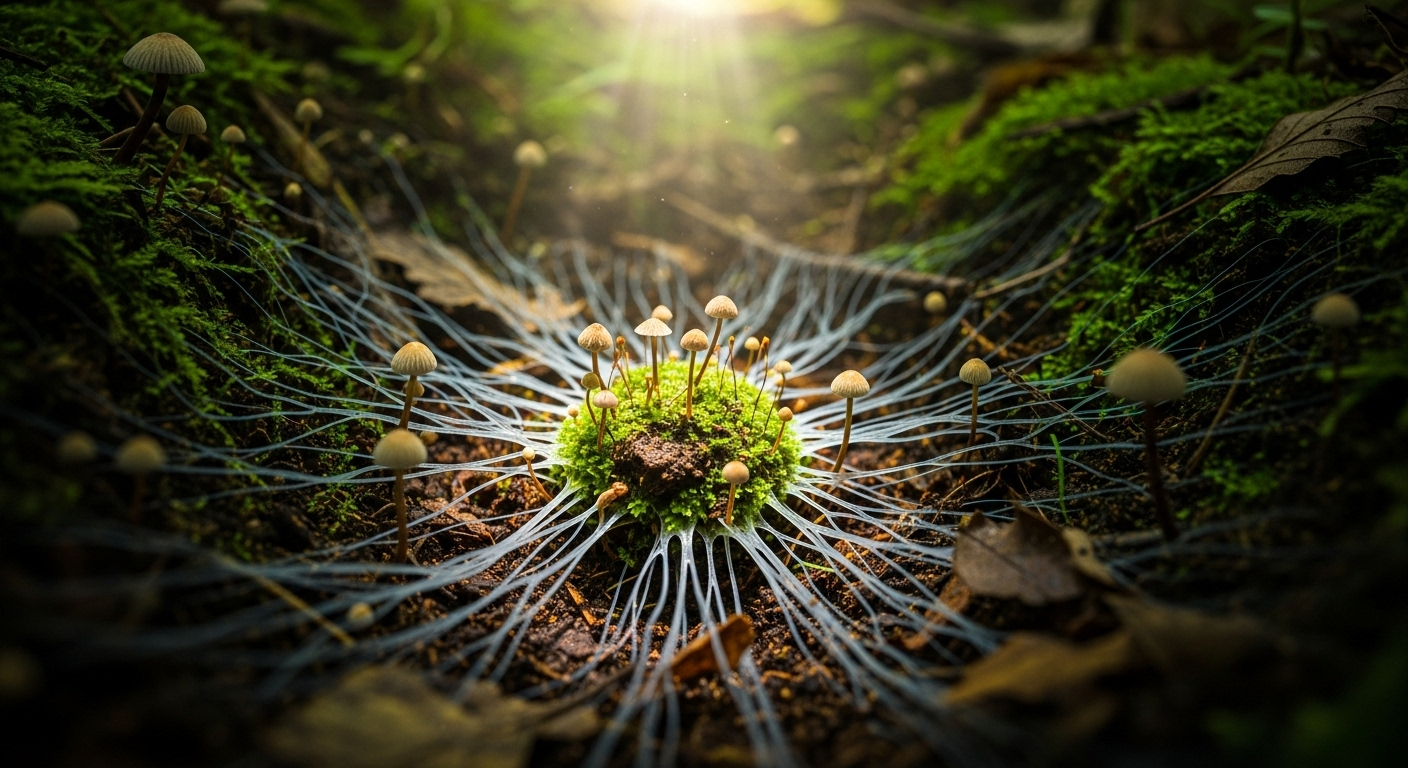Mycelial Networks: Nature's Hidden Internet and Their Potential for Human Health
The underground world beneath our feet teems with an intricate network of fungal threads, silently orchestrating the health of entire ecosystems. But could these mycelial networks hold the key to revolutionizing human health? As we delve into the fascinating realm of fungal intelligence, we uncover a world of potential that might just reshape our approach to wellness.

These intricate webs of fungal hyphae stretch for miles beneath the forest floor, facilitating nutrient exchange, communication, and even defense mechanisms among plants. The discovery of these networks has revolutionized our understanding of forest ecosystems and plant intelligence, revealing a level of interconnectedness and cooperation previously unimagined in the plant kingdom.
The Biological Marvel of Mycelial Intelligence
Mycelial networks exhibit a form of decentralized intelligence that has captivated researchers across various scientific disciplines. Unlike the centralized nervous systems of animals, mycelial networks operate through distributed decision-making processes, allowing for remarkable adaptability and resilience.
These networks can solve complex spatial problems, optimize resource allocation, and even demonstrate a form of memory. For instance, slime molds, a type of mycelial organism, have been observed recreating efficient transport networks that rival human-engineered systems. This intelligence extends beyond mere survival, as mycelial networks actively shape their environments, influencing soil health, plant diversity, and even climate regulation.
Mycelial Networks and Human Health: Bridging the Gap
The potential applications of mycelial networks in human health are as diverse as they are exciting. Researchers are exploring how the principles of mycelial intelligence could be applied to enhance our own biological systems and medical treatments.
One promising area of research involves using mycelial networks as a model for developing more efficient drug delivery systems. The way fungi distribute nutrients and information through their networks could inspire new methods for targeted drug delivery, potentially revolutionizing treatments for diseases like cancer.
Additionally, the study of mycelial networks has led to insights into the human microbiome. The complex interactions within fungal communities bear striking similarities to the microbial ecosystems within our own bodies. Understanding these parallels could lead to novel approaches in managing gut health and boosting overall immunity.
Harnessing Mycelial Compounds for Wellness
Beyond their network properties, fungi produce a vast array of bioactive compounds with potential health benefits. Many of these compounds are being investigated for their medicinal properties, including:
-
Immunomodulators: Certain fungal polysaccharides have shown promise in enhancing immune function and potentially aiding in cancer treatment.
-
Neurotropic agents: Some mushroom species contain compounds that may support brain health and cognitive function.
-
Adaptogenic properties: Several medicinal mushrooms are being studied for their ability to help the body adapt to stress and maintain balance.
As research in this field progresses, we may see a new wave of mycelium-derived supplements and therapies entering the wellness market, offering natural alternatives to traditional pharmaceuticals.
The Environmental Connection: Mycelial Health as Planetary Health
The health of mycelial networks is inextricably linked to the health of our planet, and by extension, our own well-being. As we face global challenges like climate change and biodiversity loss, the study of mycelial networks offers valuable insights into ecosystem resilience and restoration.
Fungi play a crucial role in carbon sequestration and soil health, two factors that directly impact human health through food security and air quality. By understanding and supporting mycelial networks, we can potentially enhance our environment’s ability to mitigate climate change and sustain biodiversity, creating a healthier planet for all inhabitants.
Fascinating Fungal Facts for Health Enthusiasts
-
Mycelial networks can extend for miles, with the largest known organism being a honey fungus covering 2,385 acres in Oregon’s Malheur National Forest.
-
Some fungi can break down pollutants and plastics, offering potential solutions for environmental cleanup.
-
Certain mushroom species have been found to produce vitamin D when exposed to sunlight, much like human skin.
-
The structure of fungal networks has inspired new designs in sustainable architecture and city planning.
-
Mycelium-based materials are being developed as eco-friendly alternatives to plastics and building materials.
As we continue to unravel the mysteries of mycelial networks, we open doors to a new paradigm in health and wellness. By learning from nature’s hidden internet, we may discover innovative ways to enhance our own health, create more sustainable technologies, and foster a deeper connection with the natural world. The future of wellness might just lie beneath our feet, in the wise and ancient networks of fungi that have silently shaped our planet for eons.





